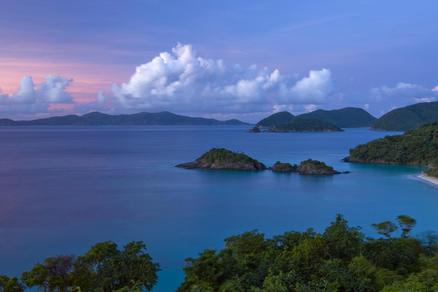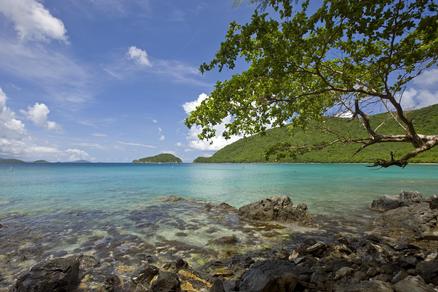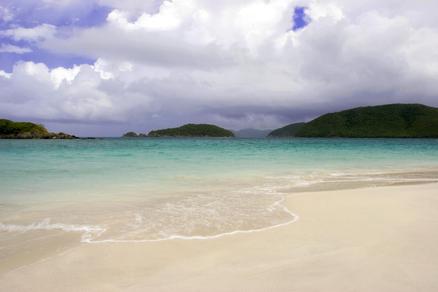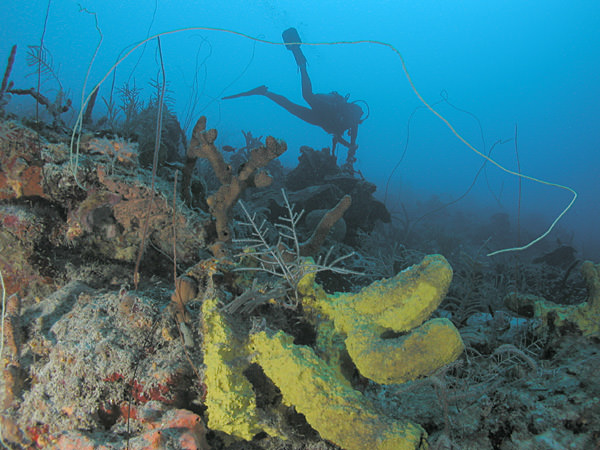
St Johns
St. John, the smallest of the three U.S. Virgin Islands, retains a tranquil, unspoiled beauty uncommon in the Caribbean or anywhere else in the world. Settled in the early 1700s by Danish immigrants attracted to the island’s potential as a sugar cane-producing colony, St. John soon blossomed into a thriving society. The ruins of the Annaberg Sugar Plantation and other smaller plantations on the island attest to the island’s agricultural history.
The extensive sugar cane farming, however, did little to affect the natural beauty of St. John. Its unspoiled forests and stunning beaches attracted the attention of wealthy families such as the Rockefellers, who sought privacy and tranquility on the island. In 1956, Laurance Rockefeller was so moved by the island that he bought and donated broad expanses of land to the National Park Service to keep St. John “a thing of joy forever.”
Today, two-thirds of St. John is part of the Virgin Islands National Park, featuring fascinating trails, secluded coves, and dazzling white beaches. The Reef Bay Trail takes hikers through dense forests, plantation ruins, and rock outcroppings marked by well-preserved petroglyphs. Trunk Bay, Hawksnest Bay, Cinnamon Bay, and Maho Bay are just four of the dozens of beaches. Cruz Bay, the center of activity on St. John, contains colorful shops, lively bars, and fabulous restaurants.
The ruins of the Annaberg Sugar Plantation provide a glimpse into the island’s agricultural history. The estate, built in the early 1700s, offers tours guided by the National Park Service. The Annaberg Historic Trail takes visitors through restored ruins on the plantation grounds. The views from the plantation are magnificent.
Cinnamon Bay’s beautiful beach includes a National Park campground offering equipped cottages and tents, as well as basic campsites. Kayaks, windsurfing equipment, snorkeling equipment, and mountain bikes are also available for rental. Snorkeling is especially popular. A nature trail, sugar plantation ruins, and wild donkeys are some of the other attractions along the beach.
Cruz Bay is the “Downtown” of St. John. Shopping and dining are plentiful, with local artwork, luxury items, and local and international cuisine. The Elaine lone Sprauve Library and Museum near downtown Cruz Bay contains historic artifacts and works created by local artists. Nearby Hawksnest Bay has a pristine beach popular with snorkelers for its nearby reef.
Visitors seeking a low-impact, environmentally sensitive vacation will find several options on St. John. The eco-resorts of the island, including Maho Bay Camps and Concordia Eco-Tents, provide tents with porches, basic kitchens, and beautiful views. Harmony on Maho Bay offers cottages built almost exclusively of recycled materials that use solar and wind power.
One of the world’s most photographed beaches and the most popular on St. John, Trunk Bay also offers an exciting underwater snorkeling trail. Underwater signs identify the various types of coral and aquatic life that inhabit the area. Snorkeling equipment is available for rental.
You can’t visit St. John without experiencing the Virgin Islands National Park. The park sprawls over most of the island and its surrounding waters. The famous Reef Bay Trail takes hikers through dense forests, plantation ruins, and rock outcroppings marked by well-preserved petroglyphs. Winding through subtropical vegetation, 22 additional nature trails offer spectacular views.





